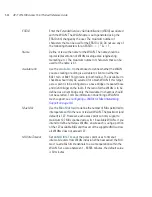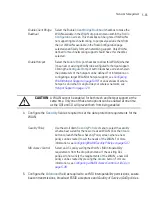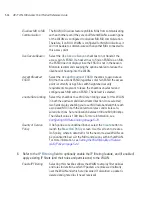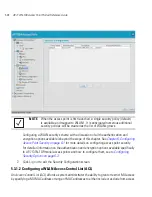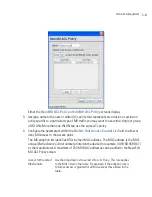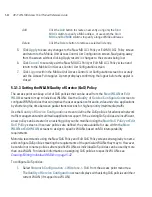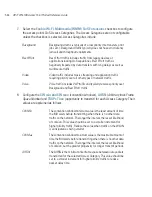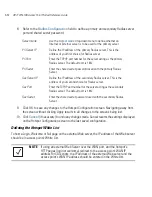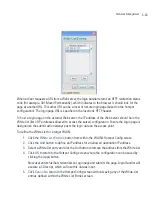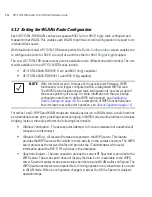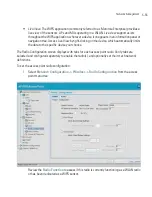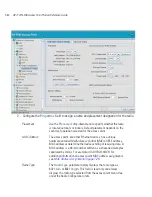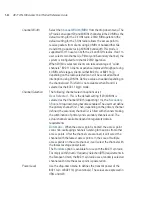
Network Management
5-47
9.
Click
Apply
to save any changes to the New QoS Policy or Edit QoS Policy screen to return
to the Quality of Service Configuration screen. Navigating away from the screen without
clicking Apply results in all changes to the screens being lost.
10. Click
Cancel
to securely exit the New QoS Policy or Edit QoS Policy screen and return to the
Quality of Service Configuration screen.
11. Click
Logout
within the Quality of Service Configuration screen to securely exit the Access
Point applet. A prompt displays confirming the logout before the applet is closed.
U-APSD (WMM Power Save) Support
The access point now supports
Unscheduled Automatic Power Save Delivery
(U-APSD), often referred
to as WMM Power Save. U-APSD provides a periodic frame exchange between a voice capable MU
and the access point during a VoIP call, while legacy power management is still utilized for typical
data frame exchanges. The access point and its associated MU activate the new U-APSD power save
approach when a VoIP traffic stream is detected. The MU then buffers frames from the voice traffic
stream and sends a VoIP frame with an implicit "poll" request to its associated access point. The
access point responds to the poll request with buffered VoIP stream frame(s). When a voice-enabled
MU wakes up at a designated VoIP frame interval, it sends a VoIP frame with an implicit "poll" request
to its associated access point. The access point responds to the poll request with buffered VoIP
stream frame(s).
TXOPs Time 32usec
The
TXOPs Time
is the interval the transmitting MU is assigned
for transmitting. The default for Background traffic is 0. The same
TXOPs values should be used for either the 802.11a/n or
802.11b/g/n radio, there is no difference.
TXOPs Time ms
TXOP times range from 0.2 ms (background priority) to 3 ms (video
priority) in a 802.11a/n network, and from 1.2 ms to 6 ms in an
802.11b/g/n network. The TXOP bursting capability greatly
enhances the efficiency for high rate traffic such as streaming
video.
NOTE
The access point ships with the U-APSD feature disabled by default. It is
automatically enabled when WMM is enabled for a WLAN. Thus, U-APSD
is only functional when WMM is enabled. If WMM is disabled, then
U-APSD is disabled as well.
Summary of Contents for AP-7131N-FGR
Page 1: ...AP 7131N FGR Access Point Product Reference Guide ...
Page 3: ...AP 7131N FGR Access Point Product Reference Guide 72E 126727 01 Revision A September 2009 ...
Page 4: ......
Page 55: ...Hardware Installation 2 11 ...
Page 68: ...AP 7131N FGR Access Point Product Reference Guide 2 24 ...
Page 90: ...AP 7131N FGR Access Point Product Reference Guide 3 22 ...
Page 148: ...AP 7131N FGR Access Point Product Reference Guide 4 58 ...
Page 300: ...AP 7131N FGR Access Point Product Reference Guide 6 72 ...
Page 338: ...AP 7131N FGR Access Point Product Reference Guide 7 38 ...
Page 635: ...Configuring Mesh Networking 9 23 5 Define a channel of operation for the 802 11a n radio ...
Page 648: ...AP 7131N FGR Access Point Product Reference Guide 9 36 ...
Page 672: ...AP 7131N FGR Access Point Product Reference Guide 10 24 line con 0 line vty 0 24 end ...
Page 692: ...AP 7131N FGR Access Point Product Reference Guide B 14 ...
Page 698: ...AP 7131N FGR Access Point Product Reference Guide B 20 ...
Page 702: ...AP 7131N FGR Access Point Product Reference Guide C 4 ...
Page 707: ......


